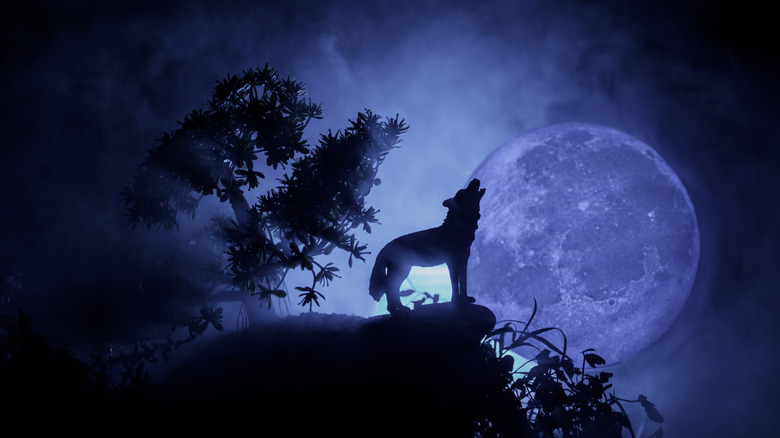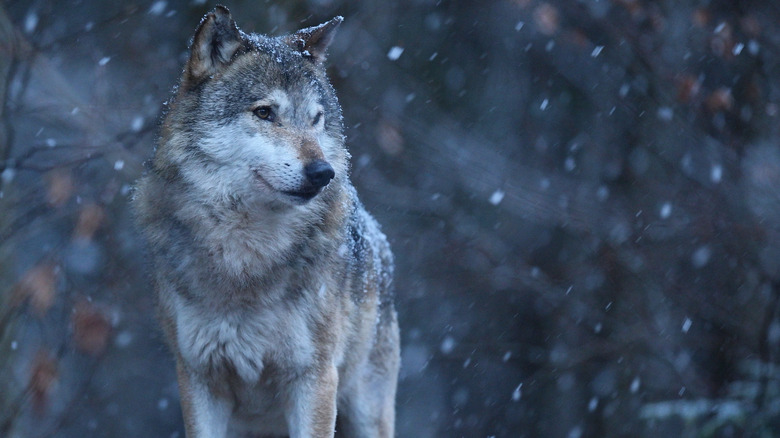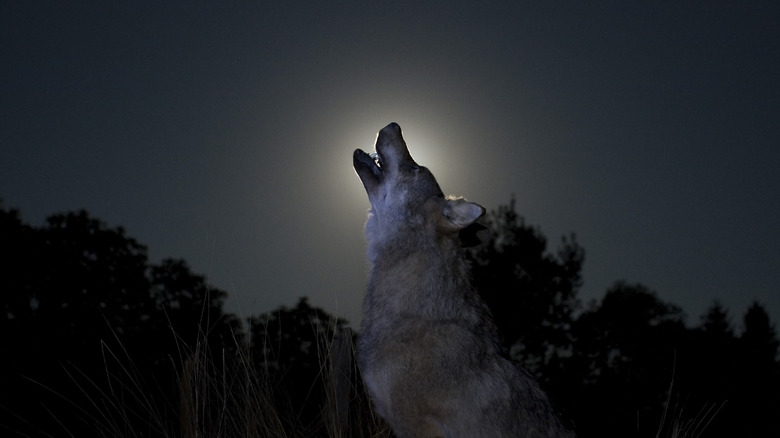Do Wolves Really Howl At The Moon?
The iconic image of wolves howling at the moon may have inspired werewolf lore and a popular t-shirt (see the New York Times), but is it based in reality?
Sort of! To clarify, wolves are not howling at the moon, according to National Geographic. They are howling to communicate with each other, much like your puppy (a descendent of wolves!) might howl or bark to get your attention or alert you to the mail delivery. Wolf howls carry over huge distances, which is useful for spread-out packs, and wolves use them to spread information like their location, nearby threats, and the availability of prey. When wolves are trying to communicate over shorter distances, they will instead use noises like barks, growls, or whimpers, according to HowStuffWorks. They even have daily howling singalongs with their pack, which may be a way for them to strengthen their bonds.
But even if wolves are not howling specifically to get the moon's attention, it's an understandable assumption. Here's why.
Wolves are active at night
Wolves are usually more active during the night than during the day. The gray wolf, for instance, is crepuscular (rather than diurnal or nocturnal), meaning it is mostly active at dawn and twilight, according to Defenders of Wildlife. In other words, wolves are out and about — and howling — at times when there may be a moon overhead. That doesn't mean, however, that they're more active when there's a full moon in the sky — at least one study has found that maned wolves actually travel less during a full moon (via Behavioural Processes), which is possibly to conserve energy during the well-lit times when their prey is more likely to be hiding.
Additionally, wolves really do throw back their heads when they howl, putting their snout straight in the air, in order to make their howl carry farther, according to HowStuffWorks. It's easy to see the direction of their snouts and assume they're pointing toward the moon.
Wolves are associated with the moon in mythology
The association of wolves with the moon is long-held, ancient, and cross-cultural, as Slate points out. In Norse mythology, the wolf Fenrir's children swallow the moon and sun. Some Native American tribes named a winter moon "the Wolf Moon," after the time of year when wolves were said to be loudest and hungriest.
The myths around wolves and the moon probably don't originally stem from wolf behavior, however. According to National Geographic, they actually may have come from the behavior of people, who likely went outside more on nights with a full moon lighting the way and therefore were more likely to encounter wolves. It also might have been a romanticization of the starkness of winter months. "Howling reaches a seasonal peak in the winter months, during the time of courtship and breeding," said Barry Lopez, the author of "Of Wolves and Men," to Slate. "It is easy to see how the idea that wolves howl at the moon might have gained credence and played well on the imagination during these cold, clear nights when the sound carried far and a full moon lent an eerie aspect to a snowscape."


